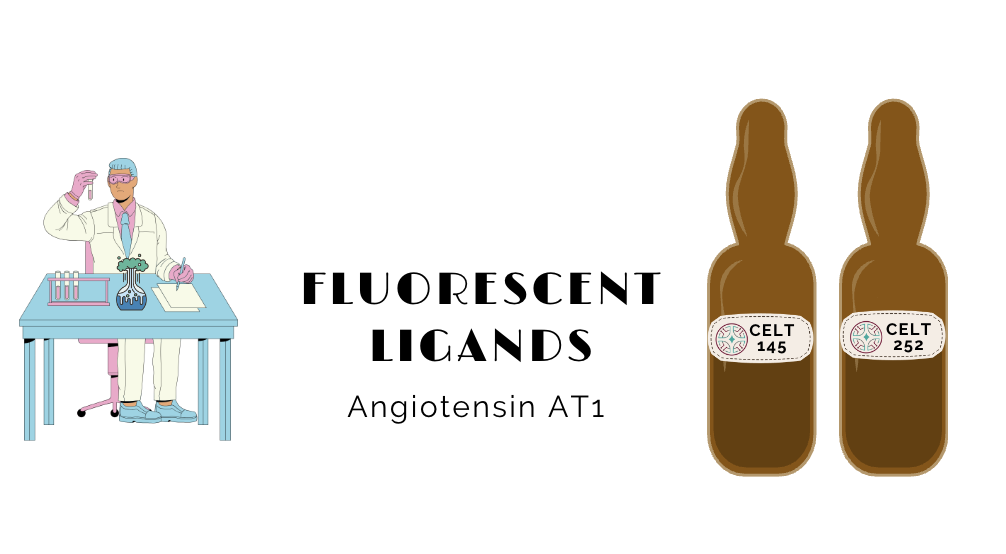Discover Our New Fluorescent Ligands For AT1

New article showcasing Celtarys fluorescent ligand for Dopamine D3 Receptor in Fluorescence based HTS
27 March 2023
Celtarys and G.CLIPS join forces to revolutionize transmembrane proteins characterization in drug discovery.
11 September 2023
Our portfolio of #GPCR#fluorescent ligands is growing.
We have just added to our catalogue more fluorescent ligands for the AT1 receptor, CELT-145 and CELT-252.
The Angiotensin AT1 receptor belongs to the GPCR superfamily and mediates several physiological actions of the vasoconstricting peptide Angiotensin II, among them regulation of blood pressure, electrolyte and water balance, thirst, hormone secretion, and renal function.
AT1 receptors are present in the human vasculature, lung, liver, brain, kidney, adrenal gland, skin, and endometrium. The AT1 receptor furthermore controls cellular growth, adhesion, migration, and intercellular matrix deposition, influencing chronic adaptive changes in vascular and cardiac growth, remodelling, repair, and atherosclerosis. On the other hand, the expression of AT1 receptors is altered by various pathophysiological conditions: renovascular hypertension, myocardial infarction, ventricular hypertrophy, and bilateral nephrectomy.
At the molecular level, AT1 receptors interact and signal with G proteins and β-arrestin. In addition, AT1 receptor communicates with growing numbers of AT1 receptor–interacting proteins including other GPCRs (heterodimer formation), being involved in a complex signalling network that has been the object of intense study in the last decades.
However, further research is desired regarding the physiological and pathophysiological roles of AT1 receptor and its signalling pathways. For carrying out those studies it is key to count on adequate research tools, like the two new fluorescent ligands exclusively developed by Celtarys Research. CELT-145 and CELT-252 are highly potent and selective fluorescent antagonists for AT1 receptor, with Ki of 160nM and 39 nM, respectively.
They allow to perform qualitative and quantitative fluorescence-based assays such as confocal microscopy, high-content screening and Fluorescence Polarization.
Moreover, their two different excitation/emission wavelengths -at 646/662 and 560/571 respectively- make our probes suitable for different equipment and multiplex settings.





